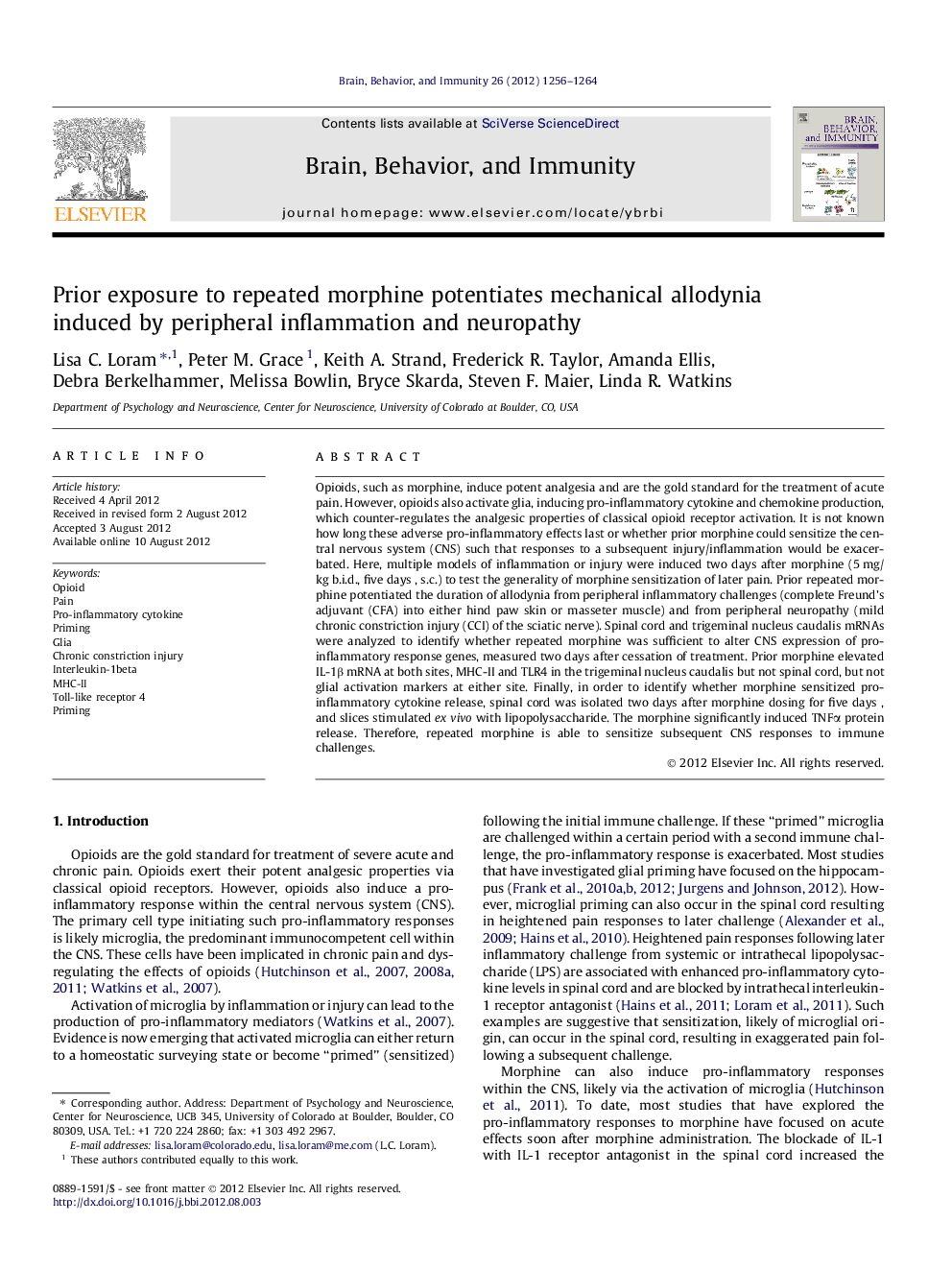| کد مقاله | کد نشریه | سال انتشار | مقاله انگلیسی | نسخه تمام متن |
|---|---|---|---|---|
| 922173 | 921028 | 2012 | 9 صفحه PDF | دانلود رایگان |

Opioids, such as morphine, induce potent analgesia and are the gold standard for the treatment of acute pain. However, opioids also activate glia, inducing pro-inflammatory cytokine and chemokine production, which counter-regulates the analgesic properties of classical opioid receptor activation. It is not known how long these adverse pro-inflammatory effects last or whether prior morphine could sensitize the central nervous system (CNS) such that responses to a subsequent injury/inflammation would be exacerbated. Here, multiple models of inflammation or injury were induced two days after morphine (5 mg/kg b.i.d., five days , s.c.) to test the generality of morphine sensitization of later pain. Prior repeated morphine potentiated the duration of allodynia from peripheral inflammatory challenges (complete Freund’s adjuvant (CFA) into either hind paw skin or masseter muscle) and from peripheral neuropathy (mild chronic constriction injury (CCI) of the sciatic nerve). Spinal cord and trigeminal nucleus caudalis mRNAs were analyzed to identify whether repeated morphine was sufficient to alter CNS expression of pro-inflammatory response genes, measured two days after cessation of treatment. Prior morphine elevated IL-1β mRNA at both sites, MHC-II and TLR4 in the trigeminal nucleus caudalis but not spinal cord, but not glial activation markers at either site. Finally, in order to identify whether morphine sensitized pro-inflammatory cytokine release, spinal cord was isolated two days after morphine dosing for five days , and slices stimulated ex vivo with lipopolysaccharide. The morphine significantly induced TNFα protein release. Therefore, repeated morphine is able to sensitize subsequent CNS responses to immune challenges.
Highlight
► Morphine dosing for five days potentiates subsequent neuroinflammation and mechanical allodynia from hindpaw inflammation, hindlimb neuropathy and orofacial inflammation.
Journal: Brain, Behavior, and Immunity - Volume 26, Issue 8, November 2012, Pages 1256–1264